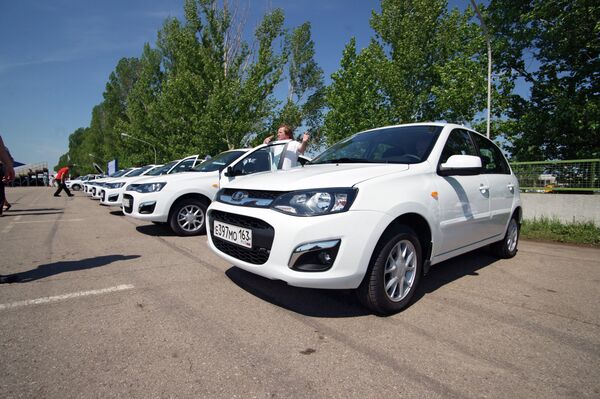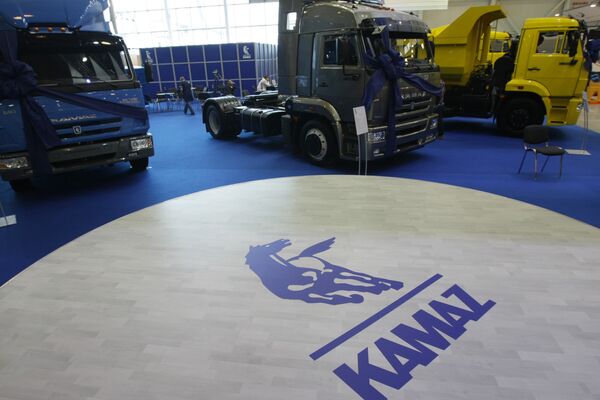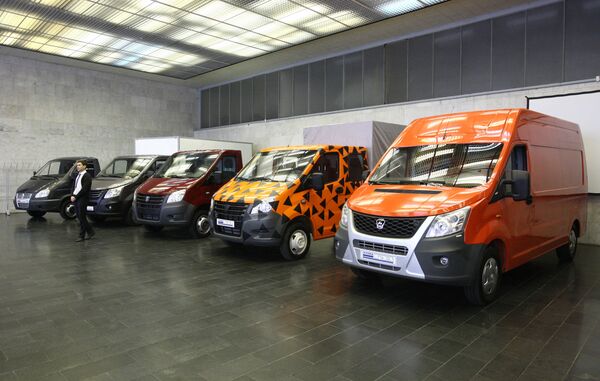Earlier this month, Germany's Federal Motor Vehicle Office reported that between January and September, local dealers of Russian automotive giant AvtoVaz's Lada brand cars sold 1,229 cars, which is up more than 40% over last year. This included 847 Lada 4x4s (a popular light SUV known for its legendary off-road capability). Dealers also sold 377 Lada Granta subcompacts, developed by AvtoVaz in collaboration with Renault.
In absolute terms, of course, the figures are still low, but they have been climbing steadily over the last several years, doubtlessly assisted by the slide in the ruble's exchange rate. Last year, Russian automotive magazine Kolyesa ('Wheels') calculated that German imports of the famous Russian brand jumped by over 460% between 2014 and 2015.
Commenting on the statistics, PolitRussia contributor Ivan Proshkin noted that while Lada's successes in the former Soviet Union and developing countries are understandable, given the brand's cost-reliability ratio, the fact that Germany, one of the absolute leaders in global automotive design and production, is showing a growing interest in the Russian brand, is significant.

For comparison, Proshkin recalled, German giant Volkswagen's budget lineup of Polo and Golf compacts starts at prices ranging from twelve-thirteen and seventeen-eighteen thousand euros, and that's for the base models.
And according to the commentator, it's not just the price point that Germans find attractive – but also the low cost of parts and maintenance.
"Low purchase and maintenance costs make Ladas ideal for use as a workhorse, including doing hard labor in the countryside and off the beaten track of the city. This, in turn, is one of the reasons behind the popularity of the Lada 4x4 and Lada Granta. There's also the ruggedness of Russian cars – their ease of operation and lack of effort needed to maintain them in good condition."
Truck manufacturer Kamaz, for its part, has opened assembly plants in Vietnam, Pakistan, and India, and recently expanded its operations to markets including Saudi Arabia, Chile, Nicaragua, Sudan, Angola, Venezuela and Panama. By 2020, the company plans to export up to 30% of its production abroad, up from 18-20% seen in recent years.

Car and truck manufacturers themselves aren't the only ones with high hopes for the domestic automotive industry. Late last month, the Ministry of Industry and Trade announced that it expects the export of cars and trucks to amount to at least 300,000 units by 2025. To this end, the state has allocated 100 billion rubles ($1.58 billion) to support the industry between 2017 and 2019, aimed at stimulating exports and helping to strengthen Russian companies' positions in Europe and emerging markets.
"Indeed, given the fact that in 2014, economic decline has affected the Russian automotive industry, expansion into foreign markets can help to neutralize the negative effects caused by financial and economic instability. Russian producers need new sales volumes – incomes which could ensure a return on investment for development and certification for export markets, and the creation of service systems in these countries."
"Additionally, the present exchange rate provides for opportunities for the rapid creation of dealer networks and service centers in other countries, and good opportunities to produce Russian cars abroad. The latter, incidentally, is already being done by Gaz, which began the production of the Gazelle Next in Turkey in the fall of 2014."

In other words, Proshkin noted, Russian automotive companies' growing popularity in traditional and new markets, together with a favorable exchange rate, and state support for expanding export potential, are certain to bring a series of benefits to the industry over the next few years.





